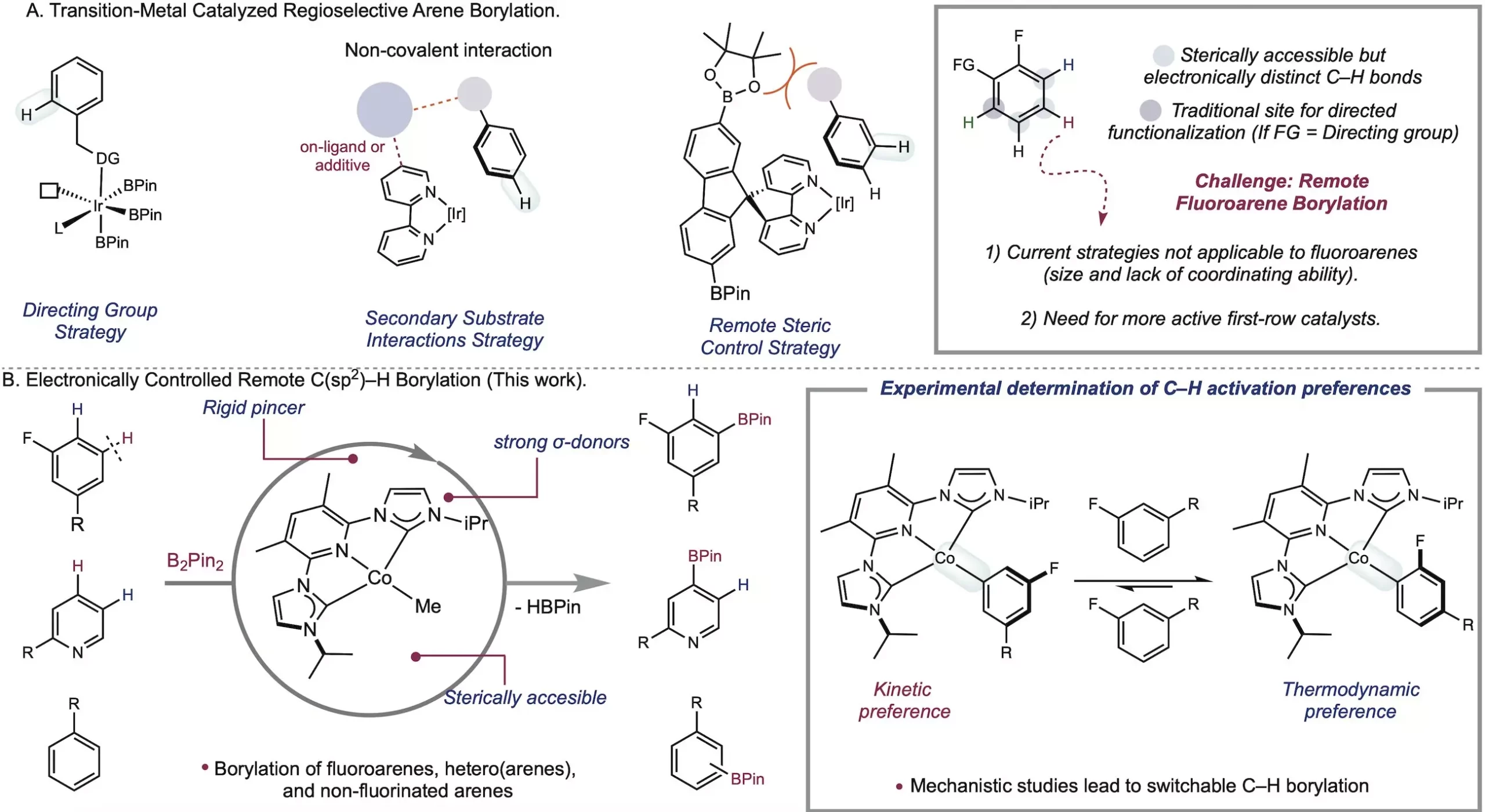The Chirik Group at the Princeton Department of Chemistry has made significant breakthroughs in the field of metal-catalyzed C–H functionalization. Their innovative method utilizes a cobalt catalyst that allows for differentiation between bonds in fluoroarenes based on their intrinsic electronic properties. This groundbreaking research, published in Science, demonstrates the group’s ability to achieve meta-selective cobalt-catalyzed borylation without the need for steric control or directing groups. The Chirik Lab’s deep insights into organometallic chemistry have paved the way for this revolutionary approach, with implications for the synthesis of medicines, natural products, and materials.
For decades, chemists have sought to make the C–H bond a reactive part of molecules, which would have significant implications for drug discovery and material synthesis. The Chirik Group’s method, known as C–H borylation, transforms the C–H bond into a carbon–boron bond, opening up new avenues for chemistry. What sets their research apart is the selective functionalization of the meta C–H bond, which has been notoriously challenging to achieve until now.
The success of the Chirik Group’s method is attributed to their rational design approach. By developing an electronically rich but sterically accessible pincer ligand, they created a cobalt catalyst that exhibits high activity for C–H activation. Early stoichiometric studies revealed the rapid activation of C–H bonds at room temperature, motivating the isolation of the catalyst.
Currently, iridium catalysts are commonly used in state-of-the-art borylation due to their reactivity and speed. However, these catalysts lack selectivity when faced with molecules containing multiple C–H bonds. The pharmaceutical industry has been in search of alternative catalysts that offer greater selectivity. The Chirik Group turned to first-row transition metals like cobalt and iron, which are more cost-effective and sustainable than iridium. Their research since 2014 has focused on electronically controlled C–H activation, where C–H bonds are differentiated based on their electronic properties, specifically the metal-carbon bond strength.
Exploiting Selectivity Switch
While studying first-row metals, the Chirik Lab uncovered a fascinating result: the ability to switch site selectivity by exploiting the kinetic or thermodynamic preferences of C–H activation. By choosing one reagent over another, chemists can streamline the process and achieve site-selective functionalization. This discovery expands the chemistry beyond fluoroarenes and opens up new opportunities in C–H functionalization.
A Versatile Catalyst
The catalyst developed by the Chirik Group presents a groundbreaking approach to C–H functionalization. Unlike traditional methods that require a completely different catalyst to change site selectivity, their cobalt catalyst allows for meta-selective and ortho-selective borylation using different boron sources. This versatility is a significant advancement in the field, offering chemists more methods to install groups in specific sites in molecules.
The Chirik Group’s cobalt catalyst represents a game-changing concept in C–H functionalization. Chemists can now predict the outcomes of metal-carbon bond strengths accurately, opening up a wide range of possibilities. With their innovative approach, the group aims to surpass the limitations of iridium catalysts and enable the synthesis of complex molecules for various applications.
The Chirik Group’s novel method for metal-catalyzed C–H functionalization using a cobalt catalyst has revolutionized the field. By targeting specific C–H bonds based on their intrinsic electronic properties, they have overcome the challenges of selectivity and expanded the possibilities for drug discovery and materials synthesis. This research not only offers a more sustainable and cost-effective alternative to iridium catalysts but also introduces a new way of exploring metal-carbon bond strengths. The Chirik Group’s innovative approach will undoubtedly shape the future of C–H functionalization and open doors to discover new molecules and their unique properties.


Leave a Reply